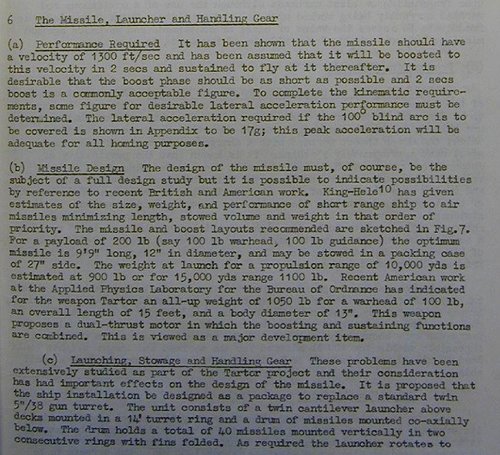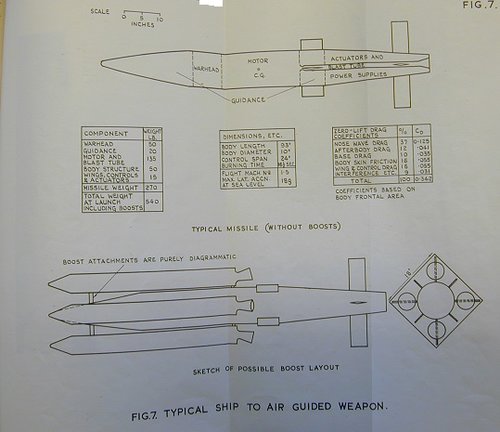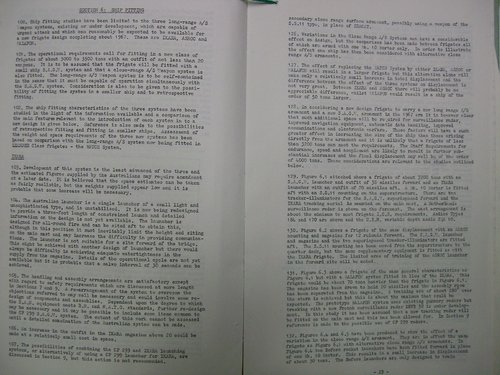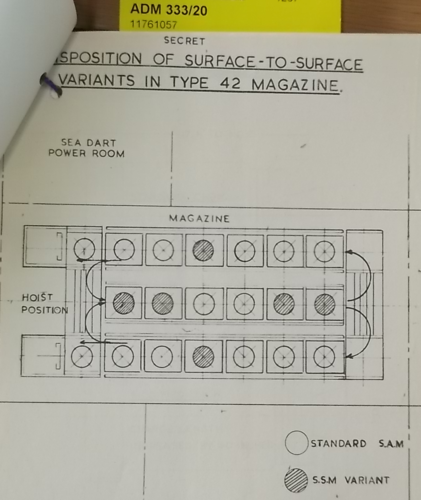- Joined
- 28 November 2006
- Messages
- 711
- Reaction score
- 736
I am currently seeking any information on two types of missiles that were conceived in 1950s by the Royal Navy as anti-aircraf guided weapons for ship of frigate size: the Popsy and the Orange Nell.
As for the Popsy there is a webpage containg some info on that at http://www.skomer.u-net.com/projects/popsy.htm:

Does anybody know more on this project? I would be especially grateful for any info on how it launcher would have looked.
As for the Orange Nell there is even less information available on the Internet. http://www.skomer.u-net.com/projects/start.htm says only that this was a "SAM smaller than Seaslug that could be fitted to small warships such as frigates", and that the project was cancelled in 1957.
Any input would be welcome.
Best regards,
Piotr
As for the Popsy there is a webpage containg some info on that at http://www.skomer.u-net.com/projects/popsy.htm:
Popsy was a SAGW to meet the Admiralty's 1948 requirement GD 81/48 to protect small ships from threats similar to the wartime German Fritz X, Hs.293 and Hs.294 guided bombs. There was also a requirement to deal with future weapons such as Blue Boar. Two solutions were examined a small SAGW and an anti-aircraft gun called DACR. This was a rapid firing cannon to be mounted on a "Scarecrow" mount. No further details of DACR are available.
The initial proposal for Popsy was a small subsonic boost/coast missile with wrap-around boosts on the 8.5" (21.6cm) diameter fuselage. Popsy A was 4'8" (1.48m) long, about 5ft (1.52m) long in total with wrap-around boosts. This later changed to a 7"(17.8) diameter tandem boost giving a total length of 8ft (2.44m). Maximum speed was 900fps (M0.8), which was thought to be adequate to defend the frigate that had launched it. Guidance was to be either command link, or later semi-active homing using Continuous Wave Q-band guidance with the Type 992 radar and a CW illuminator.
However, since these frigates would no doubt be escorting convoys and were too small to carry Sea Slug, it was decided that Popsy should have a capability to intercept aircraft (with speeds less than Mach 1) and also be capable of being launched from merchant vessels.
Popsy B was slimmer with a diameter of 7.5" (19cm), longer at 6'8" (2.03m) with a 5ft 10" (1.78m) tandem boost. The bigger boost raised launch velocity to 2200fps (M2.02), with intercept velocity being 1500fps(M1.38).
Popsy B appears to have shared a common airframe and semi-active homing with Red Hawk. Red Hawk was "de-spec'd" to produce the Blue Sky AAM that entered limited service as Fireflash. It is also possible that the Homing Test Vehicle, HTV, later called CTV.4 was a prototype for Popsy B.
The next variant was Popsy-Meteor, which used a sustainer from the US Meteor AAM giving twice the range at 12000yds (10.9Km). It was also considered that the Meteor AAM with the Popsy homing head would make a very good SAM. Mopsy was born.
Mopsy was a 1950 joint US / UK project to GD 165/50 whereby a Meteor without the sustainer was fitted with the Popsy seeker. Mopsy was to be used against supersonic aircraft and missiles. The US Navy wanted Mopsy to be fitted to merchant vessels, with guidance to be carried out by a "mastership".
Popsy and Mopsy did not proceed, possibly as a result of the Admiralty watching the problems developing in the Sea Slug programme.

Does anybody know more on this project? I would be especially grateful for any info on how it launcher would have looked.
As for the Orange Nell there is even less information available on the Internet. http://www.skomer.u-net.com/projects/start.htm says only that this was a "SAM smaller than Seaslug that could be fitted to small warships such as frigates", and that the project was cancelled in 1957.
Any input would be welcome.
Best regards,
Piotr




